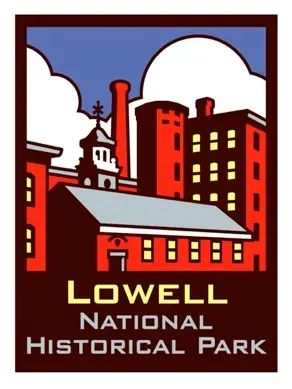For more lessons and resources visit:
Post-Visit Lesson Plans and Resources
We’ve prepared program-specific activities that extend your field trip experience back in the classroom. The activities will help students reinforce concepts learned during their Tsongas Industrial History Center experience, and provide an opportunity for reflection and connection to other topics and concepts. We have also included resources mentioned during your visit by our Museum Teachers/Rangers.
Click on "Title of Activity" to download a PDF document of the lesson plan or activity.
| Title of Activity | Brief Description | Grade Level |
|---|
| Innovate it! | In this activity, student teams will use the engineering design process to innovate a new design for a school desk. | 3-8 |
| Title of Activity | Brief Description | Grade Level |
|---|
| My Family's Immigrant History | Students trace their own roots to find out about their family’s immigrant history. They create a patchwork-design mural sharing their own family’s stories. | 3-5 |
| Title of Activity | Brief Description | Grade Level |
|---|
How People Lived and Worked
Before and After the Industrial Revolution | Students will use images of a farm and a factory to further explore the changes in the way people lived and worked during the American Industrial Revolution. | 3-5 |
Industrial Watershed
| Title of Activity | Brief Description | Grade Level |
|---|
| Topographic Maps | This lesson illustrates reviews the concept of a water table, its relationship to landforms, and how the surface topography land is represented on a map. | 5-8 |
| Title of Activity | Brief Description | Grade Level |
|---|
| Thinking About Power Today | This activity asks students to compare various sources of energy used in the United States today. | 6-8 |
| Splash! | This website connects you to the data your class collected during their Power to Production field trip, graphs of the data, and additional resources for using that data in the classroom. | 4-12 |
| Title of Activity | Brief Description | Grade Level |
|---|
| If / Then | Causes and effects are very important to science. In this lesson, students will examine the causes and effects of natural acts and human activity on the environment. | 5-8 |
| Title of Activity | Brief Description | Grade Level |
|---|
| Work Awareness: Exploring Jobs and Careers | This activity asks students to explore the knowledge, skills, and abilities required for various types of jobs. | 4-6 |
| Mule Spinners Strike | This activity places students in an 1875 role-play, in which they assume the role of either a mill agent or one of two different groups of workers who are in competition with each other. | 8-12 |
The World of Barilla Taylor: One Mill Girl’s Experience in Lowell | This interdisciplinary set of primary sources provides students with insight into one mill girl’s experience in Lowell. Includes family letters, newspaper articles, mill and hospital records, receipts, advertisements, and lithographs. | 5-12 |
| Title of Activity | Brief Description | Grade Level |
|---|
| Sharing Immigrant Experiences | Assuming the persona of the immigrant they portrayed in the immigration workshop, students create letters or journal entries imaging their experience of immigrating to America. | 3-5 |
| Resources on Contemporary Immigration to Massachusetts | Web resources that provide data on refugees and immigrants to Massachusetts, and the social agencies who help them to adjust to life in the United States. | 4-5 |
| Cross-writing Letter | A digital copy of the letter shared as part of the mill girl’s bandbox. | 3-5 |
| Role Card Worksheet | This worksheet helps students “unpack” more information about the immigrant character they played during the workshop. | 3-5 |
| "A School for Kids Like Me" | "A School for Kids Like Me" introduces students to the controversial 1830s issue of whether or not public funds should support what was essentially a parochial school in Lowell's Irish Neighborhood. | All grades |
| Cambodian Refugees in Lowell | This online exhibit features mini-biographies of Cambodian refugees who moved to Lowell in the 1980s-1990s, and photographs of cultural objects related to the Cambodian community in Lowell. The biographies and objects are from the Cambodian “luggage” in our Yankees and Immigrants program. Part of the Smithsonian Institution’s Learning Lab. | All grades |
| "Their Stories: Lowell’s Youth and the Refugee Experience” | This is an online version of an exhibit at Lowell National Historical Park, Lowell, Massachusetts. It features the stories of five refugees who came to Lowell as teenagers. Read their stories and hear, in their own words, why they left their home countries, their experiences as refugees, and how they are adapting to life in Lowell. Part of the Smithsonian Institution’s Learning Lab. | All grades |
| The Next Generation of Lowell's Immigration Stories | Student interns from Lowell High School interviewed their fellow students who were immigrants or refugees to Lowell. The four interviewees shared their thoughts about what it was like to leave their home country, their first impressions of Lowell, and how they have adjusted to life here by integrating their home culture with their new American culture. | All grades |


